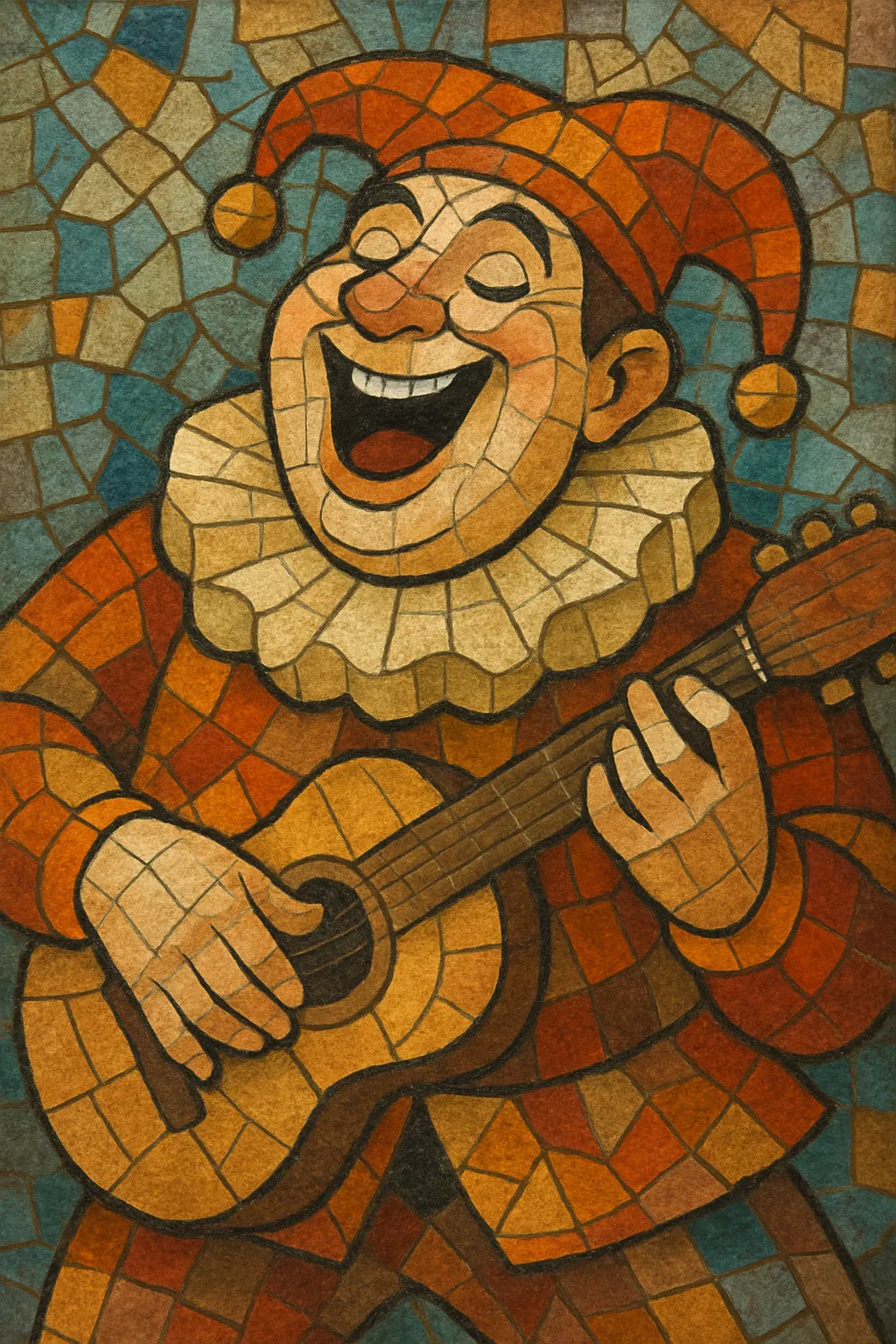Comedy (as a music genre) comprises songs and recorded pieces designed primarily to make listeners laugh through parody, satire, wordplay, character voices, and situational humor. It often borrows the musical language of whatever is popular at the time—pop, rock, hip hop, folk, musical theatre—then subverts expectations with humorous lyrics, exaggerated performance, and sonic gags.
Rooted in vaudeville and music hall traditions, comedy music ranges from novelty songs and topical ditties to elaborate pastiches and narrative sketches. It values comedic timing as much as musical craft, using hooks, rhyme, and arrangement to set up and deliver punchlines while remaining musically engaging.
Recorded comedy music emerged with early cylinders and 78s in the late 19th century, when vaudeville (US) and music hall (UK) performers adapted comic patter and novelty songs for the phonograph. Early "laughing songs," dialect sketches, and topical ditties bridged stage comedy with recorded sound, establishing templates for timing, audience asides, and sound effects.
The mid‑20th century saw a golden age of novelty orchestration and satire. Spike Jones used cartoonish sound effects and virtuosic band chops to lampoon popular tunes. Tom Lehrer brought urbane musical theatre craft to sharp political and academic satire. Allan Sherman and Stan Freberg popularized song parodies and comedic concept albums, while radio and jukeboxes amplified the reach of humorous singles.
Comedy thrived alongside rock and television. Monty Python issued sketch‑and‑song LPs; the Dr. Demento radio show created a national platform for novelty hits; and "Weird Al" Yankovic standardized the modern parody single with meticulous style pastiches. Ray Stevens and other country‑pop humorists scored chart successes, and comedic acts increasingly toured like rock bands.
Online video and social platforms transformed discovery, enabling acts like The Lonely Island, Flight of the Conchords, and Bo Burnham to blend narrative, sketch, and music. High‑fidelity home production, rapid cultural turnover, and meme culture encouraged quick‑turn topical songs and genre‑accurate pastiches. Today, comedy music spans studio‑polished pop parodies, hip‑hop skits, folk storytelling, and live multimedia shows.
Decide whether you’re doing a direct parody (new lyrics over a recognizable style), a style pastiche (an original that perfectly mirrors a genre’s tropes), or a character/narrative song. Pick a musical idiom (pop, rock, hip hop, folk, musical theatre) that best supports the joke.
Craft a clear premise, then escalate with setups and punchlines. Use misdirection, the rule of three, rhyme misplacement, and occasional bathos. Ensure scansion fits the melody; awkward meter can step on punchlines. Keep choruses hooky and slogan‑like so the gag is memorable.
Mirror genre signatures (drum patterns, chord voicings, instrumentation) so listeners instantly recognize the target. Use dynamics and rests to land jokes; leave space before punchlines. Add tasteful sound effects or backing vocals for reaction beats, but avoid clutter that masks diction.
Diction is paramount—articulate consonants and keep tempo slightly under the maximum you can enunciate. Character voices, call‑and‑response, and ad‑libs can heighten humor, but stay consistent with the song’s world. Treat backing vocals like extra punchlines (echoing tags, undercutting the lead).
Genre‑accurate mixing sells the bit: emulate era‑specific reverbs, drum tunings, and mastering loudness. Use Foley or comic stingers sparingly, automate spotlights for key words, and sidechain competing elements under punchlines.
Onstage, pace like stand‑up: open strong, vary tempos, and close with your tightest song. For parodies, understand fair‑use/compulsory licensing rules in your territory; credit inspirations in descriptions and metadata. Punch up rather than down; avoid jokes that age poorly.


